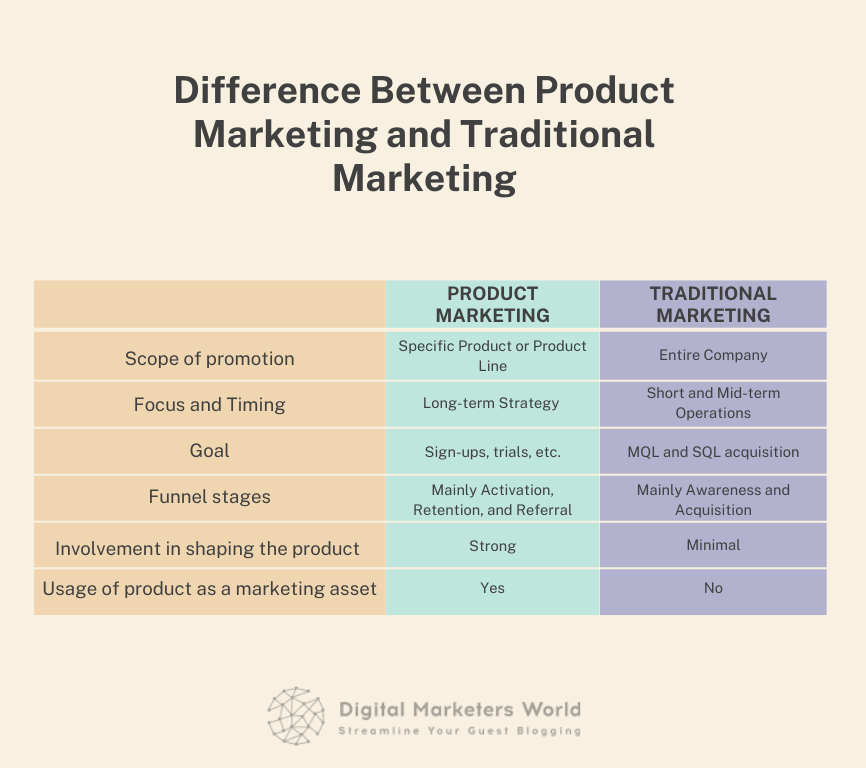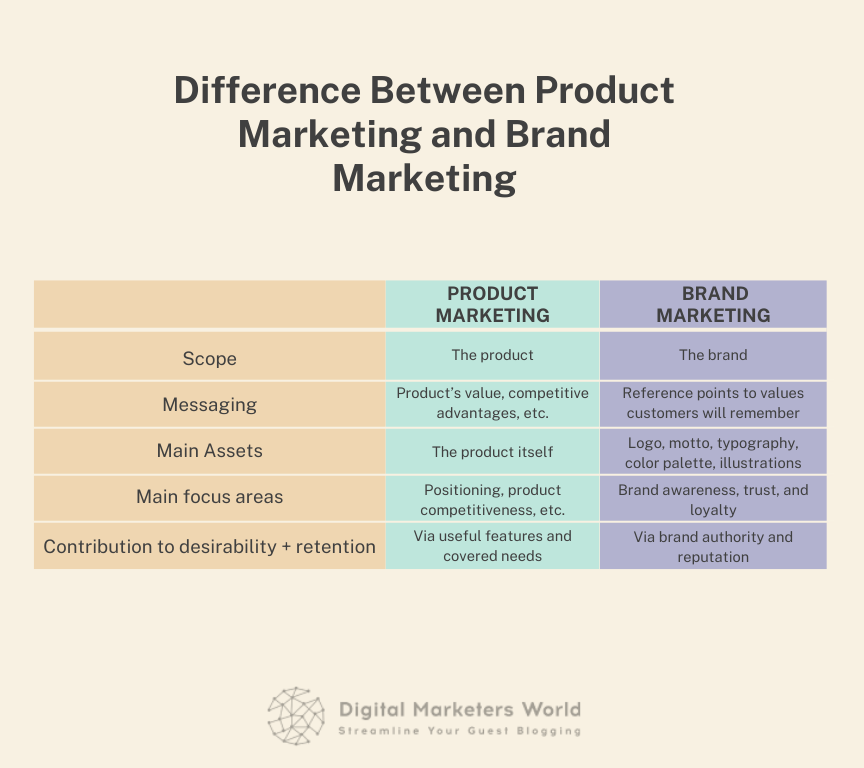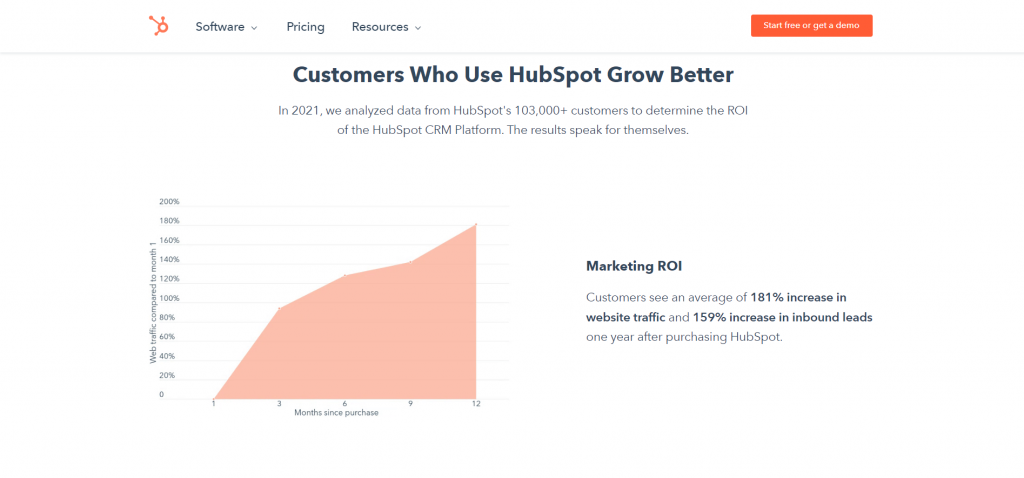What Is Product Marketing [Definition, Examples & More]
You have probably heard some of your colleagues talk about product marketing or even consider specializing in it.
But what is it really? Is getting into product marketing something worth it?
We have answers to these questions for you in our guide on product marketing.
What is Product Marketing?
Product marketing is a subdivision of marketing that focuses on the promotion and growth of specific products.
There are many beliefs that product marketing is a separate discipline that blurs the line between marketing, sales, and product management. These opinions are myths as product marketing is more part of traditional marketing that simply has a more narrow scope – one or more products that your company makes instead of the promotion of the entire company.
Apart from the definition of product marketing, in order to make this discipline more clear to you, let’s try to define the product marketer’s job and responsibilities.
What Is the Role of Product Marketing?
The role of product marketing is to have a deep understanding of the needs of customers and demand generation for the product by properly communicating and matching product solutions with customer needs.
Some of the key responsibilities of a product marketer are:
- Product positioning and messaging by defining how the company should present the product to the market and how we want the potential customers to perceive the company’s product.
- Conducting market and customer research (including customer feedback from customer success teams) to understand the target customers’ needs, jobs to be done, and willingness to pay for your products. Product marketers also gather global market data, such as size, competition, etc.
- Managing product launches as product marketers are responsible for both managing launch timing and creating the right message to publicize the launch to their target audience and making sure that it spreads widely.
- Taking part in product roadmap planning by bringing all the knowledge about customer needs to the roadmap planning meetings and influencing the roadmap with their insights.
- Driving awareness and demand and helping sales teams close more deals as revenue is the eventual goal for most of the products.
To summarize, product marketing managers (a.k.a. PMMs) work closely with product managers, stakeholders, and traditional marketers to make their new products more attractive to customers and ensure sustainable growth.
Now let’s understand why companies should consider hiring product marketers and creating product marketing teams.
Why Is Product Marketing Important?
Product marketing is an important and inseparable part of business success as product marketers are there to help your company’s products and services reach their maximum potential.
Among the many benefits of product marketing, let us focus on a few that provide the most value:
Superior targeting via effective use of buyer personas: Customer discovery interviews and persona development are core and integral parts of this discipline. Product marketing teams use these practices to clearly understand their customers’ needs and what they will pay for.
And all of it results in significantly higher chances that the product will hit sales targets (71% of companies who hit their sales targets use personas).
Focus on retention: Product marketers pay special attention to the customer journey and experience. As part of their job, product marketing teams can collaborate with product management and customer-facing teams (e.g., customer experience who act as the voice of the customer). Such teamwork is necessary to make changes in the product’s design and functionality to improve the activation and retention journeys of customers and increase the number of people who stay with your product for a long time.
Why is this important? Because retaining a customer is five times cheaper than acquiring a new one.
Focus on sustainability: Although these teams will constantly create and manage short-term product marketing campaigns, the ultimate goal of product marketing is to find the right people, offer them the right product, price and position the product in the right way, and effectively compete with other players in the market.
When your team reaches these goals, your products will be able to grow in an organic, stable, and sustainable manner.
Now, with the benefits of product marketing clear, let us help you differentiate it from traditional marketing functions with a side-by-side comparison of these two.
What is the Difference Between Product Marketing and Traditional Marketing?
It is quite easy to get confused with the terminology in digital marketing, especially when discussing its different disciplines. This case is valid for comparing product marketing to traditional marketing too. But no worries, we have got you covered on this.
Before we make any detailed comparison, let us give you an overview of both.
Traditional Marketing: This overarching discipline covers all channels and methodologies. In our case, we are speaking about running company-wide campaigns, managing ad copies and designs, and all other similar activities.
Product Marketing: It is a subdivision of traditional marketing focusing only on products. Product marketers can use many of the channels and tools of traditional marketing (e.g., HubSpot, GTM, social media marketing, webinars, email marketing, landing pages, etc.), but their main focus is on the strategic aspects versus the tactical ones of traditional marketing.
Now let us make the differences clearer to you with a side-by-side comparison.

The last point in the comparison is something that makes the product marketing distinct from others. Product marketers will use the new feature set and user experience (especially relevant for SaaS and when you want to market software products) of their product to activate new customers and retain their existing customers.
With the difference between these two types of marketing clear, let us move on to another one that people confuse with product marketing.
What is the Difference Between Brand Marketing and Product Marketing?
Many marketers and business owners confuse product marketing with brand marketing too. Just like in our previous case, the terms might sound related, but there is a clear difference between the deliverables, assets, processes, and the goals of these two.
Again, let us begin with a bird’s-eye view of both.
Brand Marketing: This discipline is concerned mainly with the trust and recognition of your brand, be it the company brand or the product brand. Brand marketers want your target audience to recognize you as the best in the market.
Product Marketing: While brand marketing wants to contribute to your retention rates with high brand loyalty, product marketing is more concerned about encouraging users to return to your product because it covers all their pain points.
For more details on the differences between these two, let’s look at their comparison table.

As we can see, product marketing is quite distinct and different from its peer disciplines thanks to its narrow and focused scope on the product’s long-term promotion.
If we sparked your interest and you would like to get started with product marketing, our next section will guide you on its main steps.
A 5-Step Product Marketing Strategy
One of the great sides of product marketing is that the steps and activities for its strategy are quite clear and straightforward.
No matter what kind of product you promote, there are distinct stages that you will go through to reach your goals.
Here are the 5 steps in question that you can set for a great product marketing strategy.
Step#1: Conduct market research and define your target audience
Before beginning with any type of promotion, you need to understand the people you want to reach.
As a product marketer, your first steps will be to:
- Analyze the market, its size, demographic breakdown, and players.
- Interview customers and understand what they want and how much they will pay for it.
- Break down your audience into cohorts with their distinct needs.
With all of this done, you can create buyer personas that you can use for your product messaging, positioning, and other product marketing activities.
Step#2: Determine positioning and messaging
Your next step after building your personas is to understand how you want to position yourself in the market.
There are two important components of positioning you need to cover.
Customer pain coverage by creating messaging that highlights the solutions you have to resolve the problems of your customers.
Competitive differentiation by featuring the areas where your product excels compared to your competition and convincing your target market to choose you over them.
Step#3: Set measurable goals
With the positioning clear, you can move on to another critical component of your go-to-market strategy – defining the outcomes you want to achieve.
With the right goals, you are significantly increasing the chances of success as marketers who set goals have a 76% rate of reaching them.
Some of the goals you might consider include:
- Earning revenue or sales enablement
- Increasing engagement rate
- Growing market presence
In some use cases, product marketers might also choose to focus on increasing brand recognition, especially in the earlier stages of their products’ lifecycle.
Step#4: Price and launch!
This step is among those that set product marketing apart from all other marketing types. As a product marketer, you get to take part in the pricing model creation during the product development.
With your knowledge of the target audience and their financial preferences, your voice carries significant weight in the pricing discussions.
Another interesting activity you get to take part in is the product launch plan creation with the product team and the technical project manager, discussions, and the launch itself as product marketers directly contribute to the launch strategy, and it is their responsibility to do post-launch promotion.
Step#5: Post-launch evaluation
Congrats, your product is live!
But your duties do not end here. On the contrary, this is where most of the fun begins.
After the product launch is successful, you start closely monitoring its key metrics and KPIs such as the number of sign-ups, product adoption rate, onboarding rate, product usage (daily active users), conversion rate, and more to see if you have reached your launch goals.
Product marketing teams usually organize a retrospective meeting to discuss the wins and points of improvement to make sure they are getting even better results next time.
As we have had the product marketing strategy steps covered for you, let us further solidify its best practices with several examples of product marketing done right.
3 Product Marketing Examples to Inspire You
There is no better way to explain something than to show an example, right?
This rule applies to product marketing too.
So let’s go ahead and see some of the best uses of product marketing in real life with these case studies.
Example#1: HubSpot’s data-driven approach
HubSpot is an all-in-one CRM solution that focuses on businesses of all sizes.
The reason we wanted to highlight this agency is that they create their marketing content with the use of data that they have on their customers and the HubSpot ROI page on their website below is a great example of this.

In this page, HubSpot points out that it is financially worth it to buy their service and it uses statistics and analysis from its data as a proof.
The product marketers at HubSpot know their buyers very well and they are convinced that the people making the HubSpot subscription purchase decision will care about ROI the most and they will need concrete numbers and evidence that investing in HubSpot will increase their returns.
Example#2: Apple’s benefits-focused messaging
We don’t think we need to introduce Apple or tell you how good they are at marketing.
Instead, let’s look at how they pay special attention to showing off the benefits of their products.

In the example above, Apple showcases its camera’s ability to capture objects 2cm away and highlights the benefits of having such a camera with the example of macro photography.
Example#3: Bellroy’s understanding of audience pain points
Bellroy is an accessories producer well known for making products that its customers love.
The reason behind it is that they know the pains of their customers very well and tailor their product features and marketing messaging to these needs.

The example above is a slim wallet for men that fits lots of cards. Product marketers at Bellroy understood that men tend to prefer slimmer wallets as they keep them in their pockets and came up with this solution.
Now Over to You
Doing product marketing is a lot of fun! You get to do lots of insightful research, work with design and product teams on features, run campaigns, and enjoy the impact of your work when your product starts to grow.
With product marketing, you can contribute to the success of your products thanks to having superior knowledge about your customers and precisely positioning yourself in the market.If you liked our piece on product marketing, there are many more guides, comparisons, and reviews on everything digital marketing in our blog.

Sona Kalantaryan is a senior digital marketer with a creative past. Big fan of high cinema and well-optimized landing pages. She authors guides by sharing the best practices and does it the right way!
